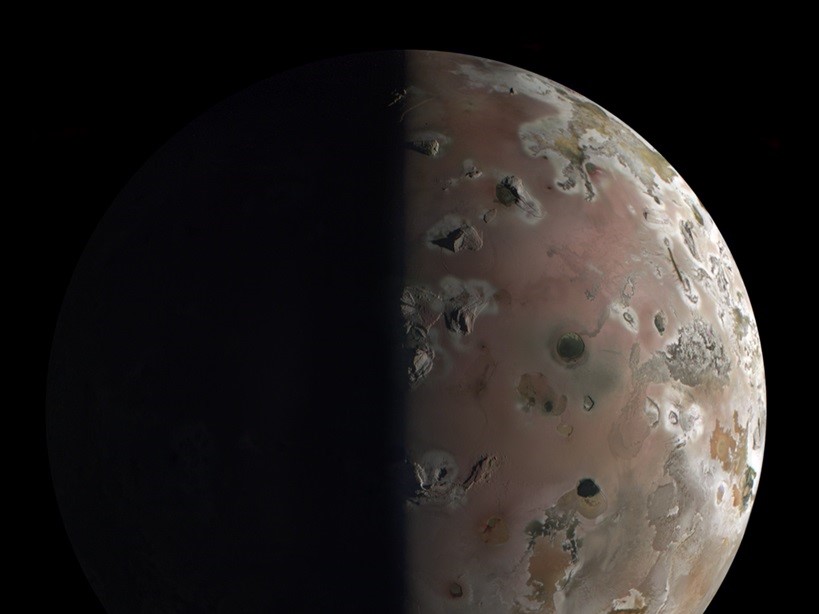The last time we saw the most volcanic world in the solar system, the moon called Io, was up close. Since then, technology has advanced a lot, so scientists are now able to learn new things.
the IFL Science The Juno spacecraft has now ventured incredibly close.
Io is a world unlike any other in the solar system. The eruptions of four hundred active volcanoes constantly bring their interior to the surface, constantly turning over rocks. The Juno spacecraft captured stunning images of Jupiter's moon during its maiden flyby. Professional and amateur image processors are already extracting details that may be missed in raw images.
Io, the black sheep of Jupiter's moons
We have known for more than 400 years that Io is distinct from most other celestial bodies in the solar system. Its discovery, along with the three other Galilean moons, shook astronomy. After the shock of its presence wore off, people noticed that it was red, while Jupiter's other three large moons were white.
Voyager missions have revealed what's special about this planet: volcanic eruptions that constantly bring the planet's interior rocks to the surface. Most of the gas giants' other moons are covered in ice, but Io's surface is dominated by sulfur. Carl Sagan called it “a world that smells like eggs and pizza pie.”
Juno spacecraft mission
By flying just 1,500 kilometers above Io's surface, Juno sent back stunning images that will be looked back on for years to come. The spacecraft has been orbiting Jupiter for seven years, but during that time it has focused largely on the planet itself. Only now has attention turned to the moons.
A close pass is more than just taking high-resolution images of the surface. Both Io and Europa are surrounded by donut-shaped ion rings, thanks to their location in Jupiter's massive magnetic field. Juno flew over him. The data collected could be of scientific interest and could be used to prepare JUICE and Europa Clipper to safely perform similar crossings.
Juno will make another close pass of Io on February 3. Because of Io's gravity, Juno's orbital period has already decreased from 38 days to 35 days, and with the next transit it will be 33 days. The rotation allows planet hunters to compare images to look for changes in Io's surface over a short period of time.
It takes some time to process images captured by Juno controllers, but many people have already begun the task.
Why is IU different?
Io's intense volcanic activity is due to its changing distance from Jupiter and the gravity of its companion moons, which constantly tighten and loosen its interior. Europa is located at a more comfortable distance from the gravity well, so these impacts generate enough heat to melt ice under the outer mantle and create an inner ocean. Nearby, Io produces much more heat, melting rocks and causing magma to erupt to the surface. In the process, Io lost almost all of its water, making it the densest moon in the solar system.
Io is so volcanic that it was thought to be the only world in the solar system, other than gas giants, without impact craters. But last month, evidence was found suggesting this may not be true.
Photos taken during a close pass will be examined by amateurs, and perhaps even professionals, for additional examples.
Worth reading:












































